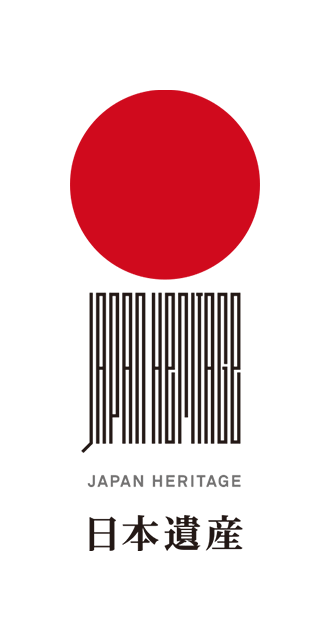Sightseeing Spots in Chugei
See
-
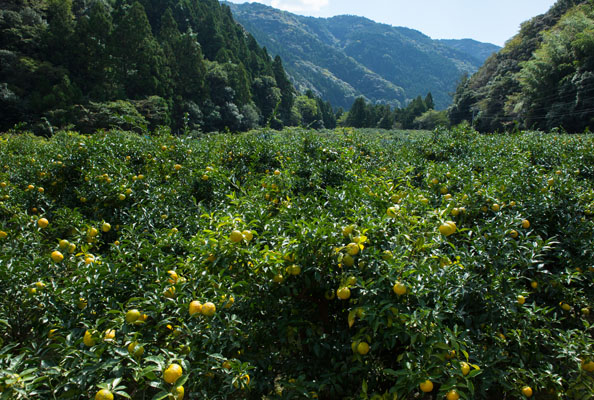
Yuzu Road
The forest railway tracks that once transported lumber have been transformed into yuzu orchards. Simply passing through the colorful and aromatic scenery of the yuzu orchards is a delight.
-
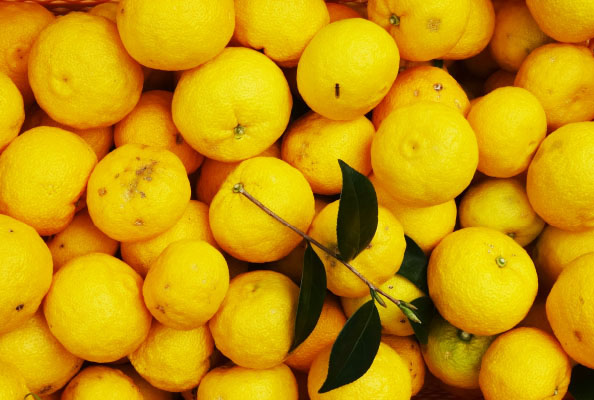
The Tree and its Fruit
(Kitagawa Village, Umaji Village, Yasuda Village)In the yuzu orchards, dainty white flowers bloom in early summer, and at the peak of summer, the trees display brilliant green leaves and fruit. In Autumn, the fruits turn a dark yellow as they ripen, and the area is filled with its refreshing scent.
-
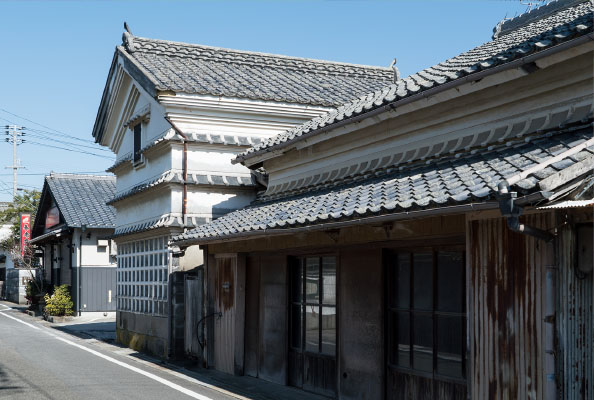
The Old Town of Nahari (Nahari Town)
Nahari Town is the passageway to Awa Province and flourished as the junction of the Tosa Tokai Road leading to Muroto and the Noneyama Road leading to None and Kannoura. The town produced many entrepreneurs and the structures that capture the traditional culture of the town can still be seen today.
-
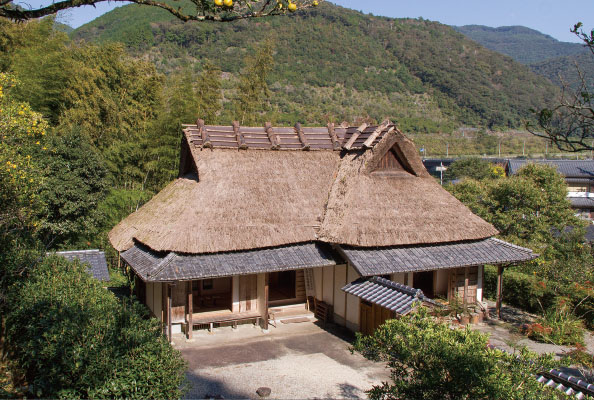
The Original Home of Nakaoka Shintaro and Museum
A drama series that was filmed here on site features the life of Shintaro and the Meiji Restoration. Feel the life of the people of this time through the displayed historical materials.
Kashiwagi 140, Kitagawa-mura, Aki-gun, Kochi Prefecture
TEL.0887-38-8600 -
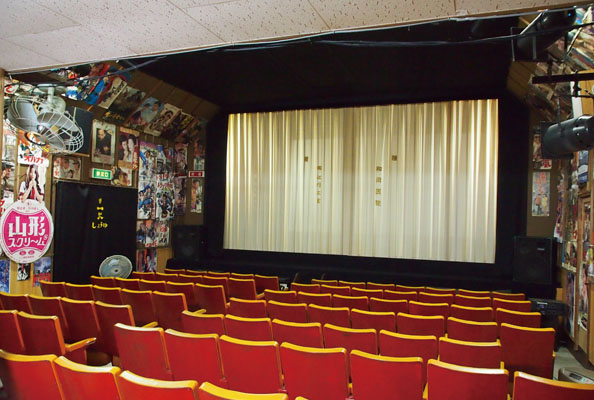
Mountain Cinema: Daishin Gekijo Theater
The Daishin Gekijo theater is filled with an air of Showa period nostalgia. Old movie posters are hung on the walls in this popular cinema that attracts visitors from all around Japan.
Experience
-
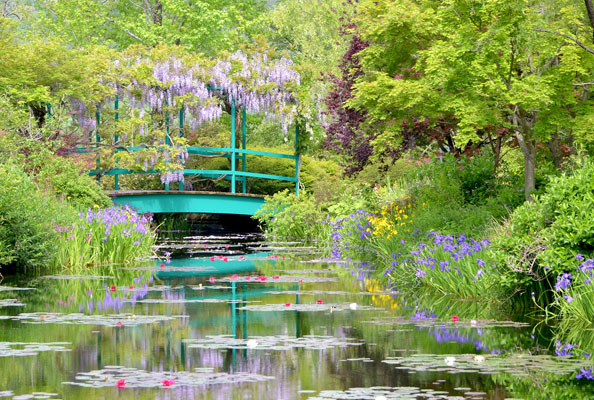
Monet's Garden (Kitagawa Village)
This is a reproduction of the impressionist painter Claude Monet's home garden. It is the only garden that has been allowed to officially use the name "Monet's Garden".
This is the ideal place to unwind from the daily grind of life. -
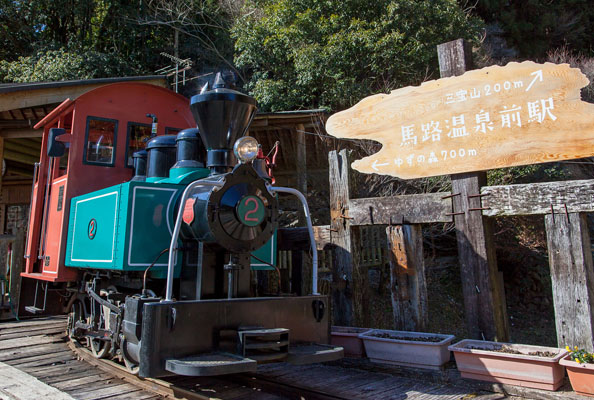
Forest Railway Train Ride (Umaji Hot Spring)
This is a replica of the steam locomotive that ran in front of Umaji Hot Spring primarily to transport Yanase cedar until 1955. The ride is about 10 minutes long and travels two laps around a 300-meter (984-foot) course.
-
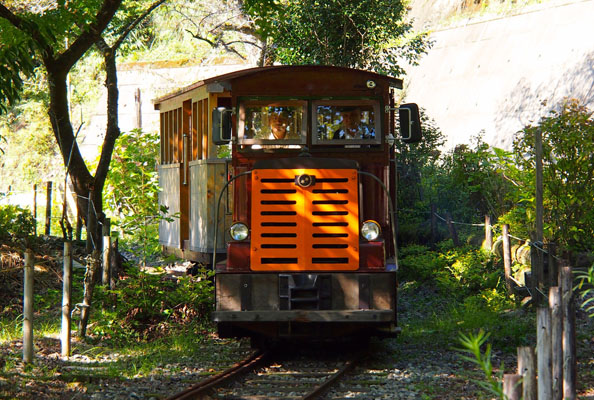
Forest Railway Train Ride
(Umaji Village, Yanase)The old railway was once an important method of transportation in the glory days of forestry, carrying lumber, people, and resources, and has now been revived.
At Yanase Maruyama Park and Umaji Onsen in Umaji Village, you can experience a ride on the old forest railway train. This exhilarating ride through nature is a popular attraction for everyone, especially children. A Nomura diesel locomotive that has been maintained in working condition is a rare sight in Japan, but you can find one at Yanase Maruyama Park. Many railway fans visit the park for the rare opportunity to conduct the train. -

Yuzu no Mori Factory Tour
(Umaji Village)See the production line of the popular yuzu drink Gokkun. Reservations are not required for this tour.
-
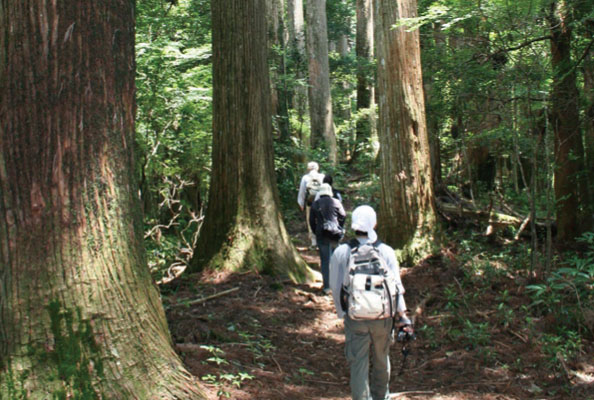
Senbonyama Mountain Hiking
From the entrance of the hiking trail, cross the Nishigawa River over the Sennen Bridge and see the famous Osugi cedar tree of Senbonyama Mountain. This massive cedar tree has been selected as one of the top 100 largest trees in Japan by the Forestry Agency. It is at least 250 years old, reaching a height of 54 meters (177 feet) with a diameter of over two meters (6.5 feet).
Umaji-mura, Aki-gun, Kochi-ken
Umaji-mura Yanase Office
Eat
-
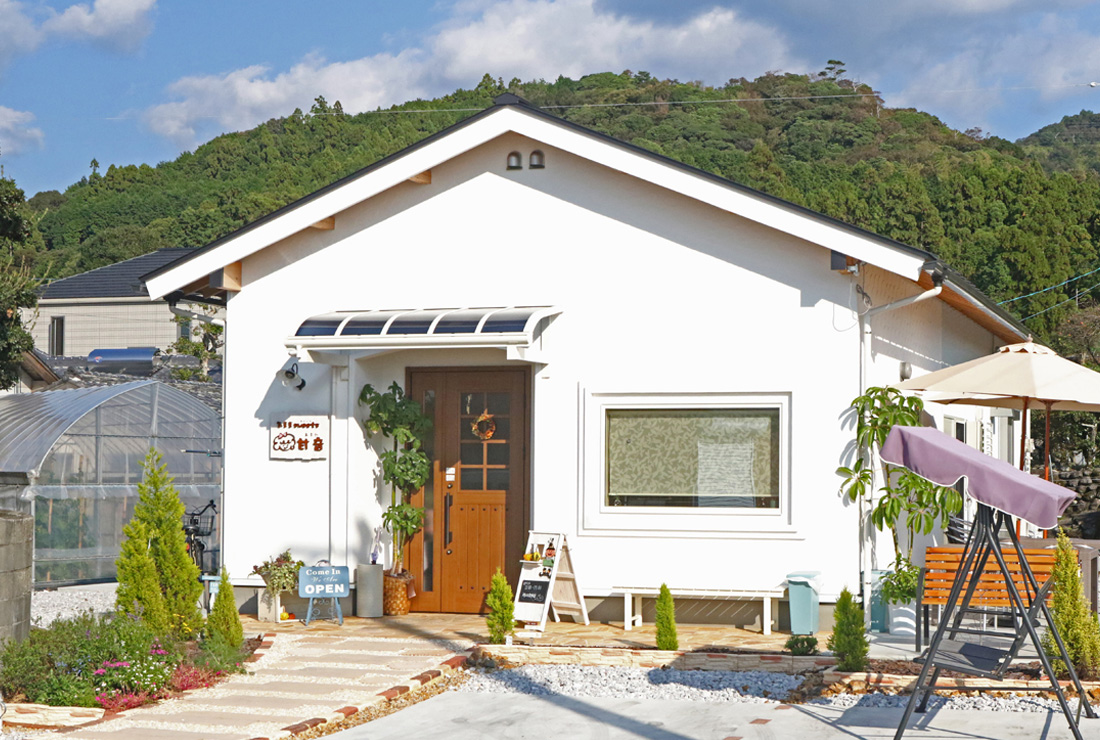
Amane Cake Shop
A charming white house straight out of a storybook sits quietly in a serene country landscape. This popular cake shop in Nahari attracts both locals and out-of-towners with its delicious sweets made with the finest ingredients.
-
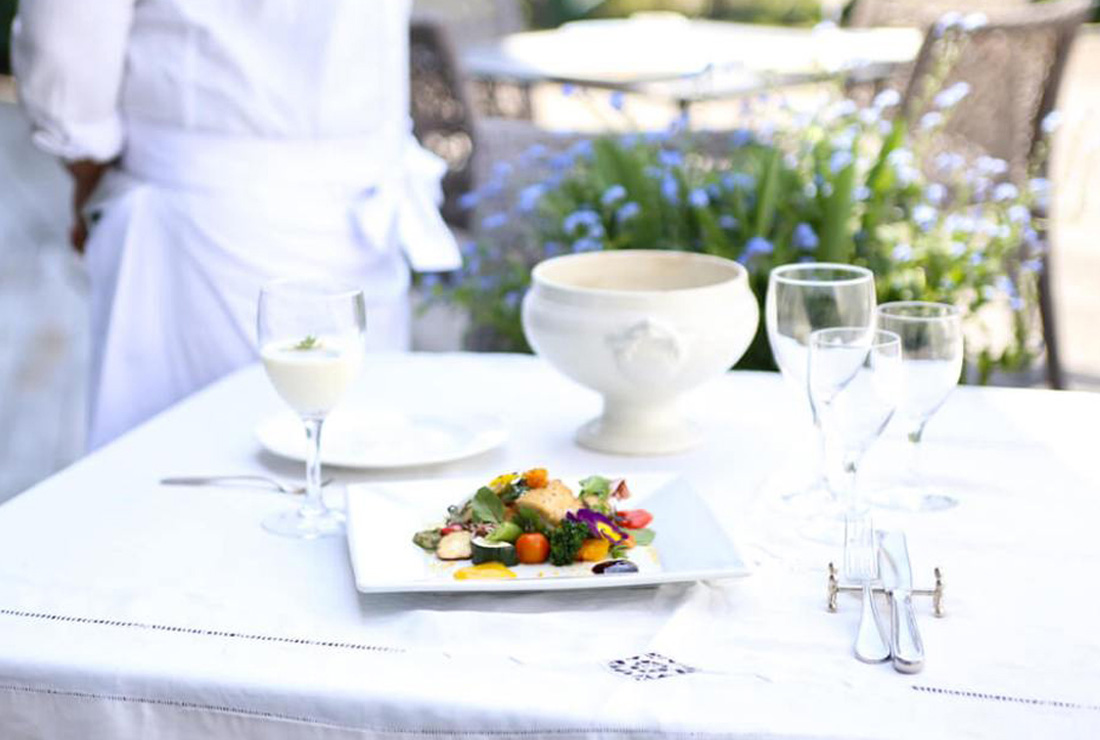
Cafe Monet no Ie
This cafe is located in Monet's Garden Marmottan in Kitagawa Village. Enjoy lunch meals and desserts featuring seasonal local ingredients and Monet's original recipes. After your meal, feel free to relax and lounge around.
-
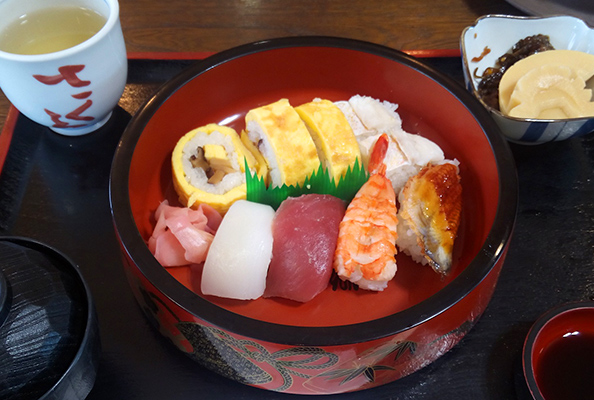
Japanese Cuisine / Sakura Sushi Restaurant
Rice seasoned with a punch of yuzu vinegar is wrapped in a thick egg omelet in the popular egg omelet roll. A wide variety of set meals and takeout sushi are also available.
-
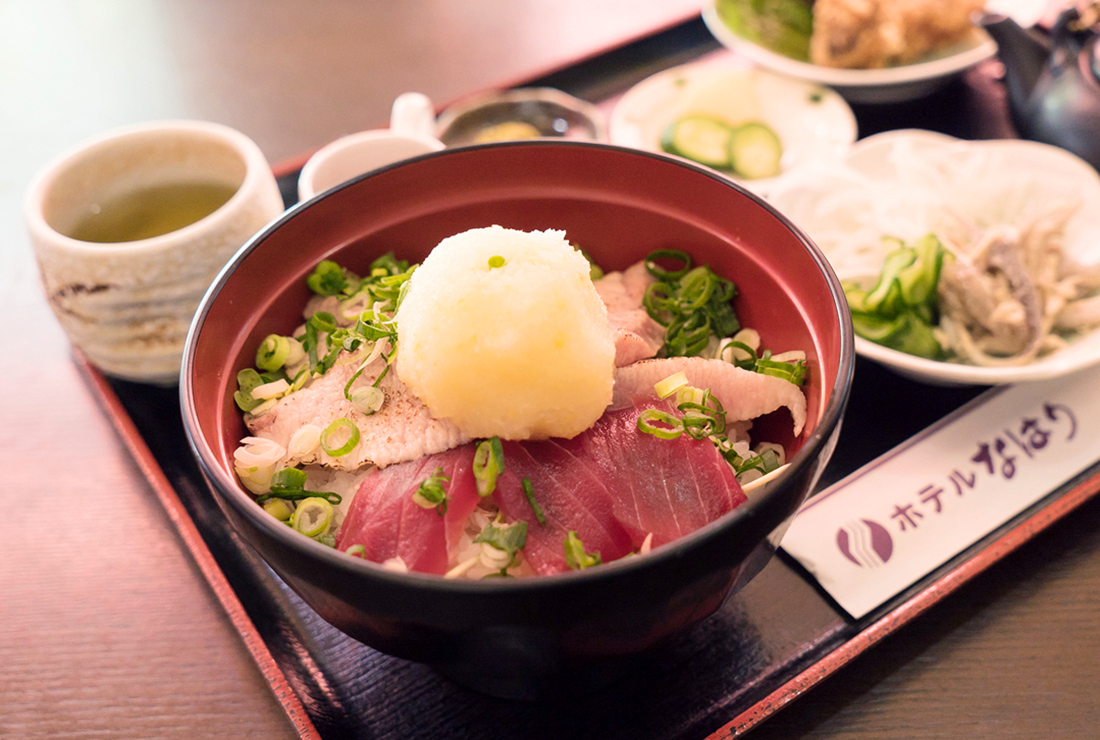
Hotel Nahari
Tuna sashimi and seared collar are topped with plenty of yuzu vinegar and grated daikon shaped to resemble yuzu! Tuna fat and yuzu are the perfect combination. Aside from the pictured rice bowl, there are many other choices such as fried tuna, vinegared tuna skin, yuzu sherbet, broth, and more.
-
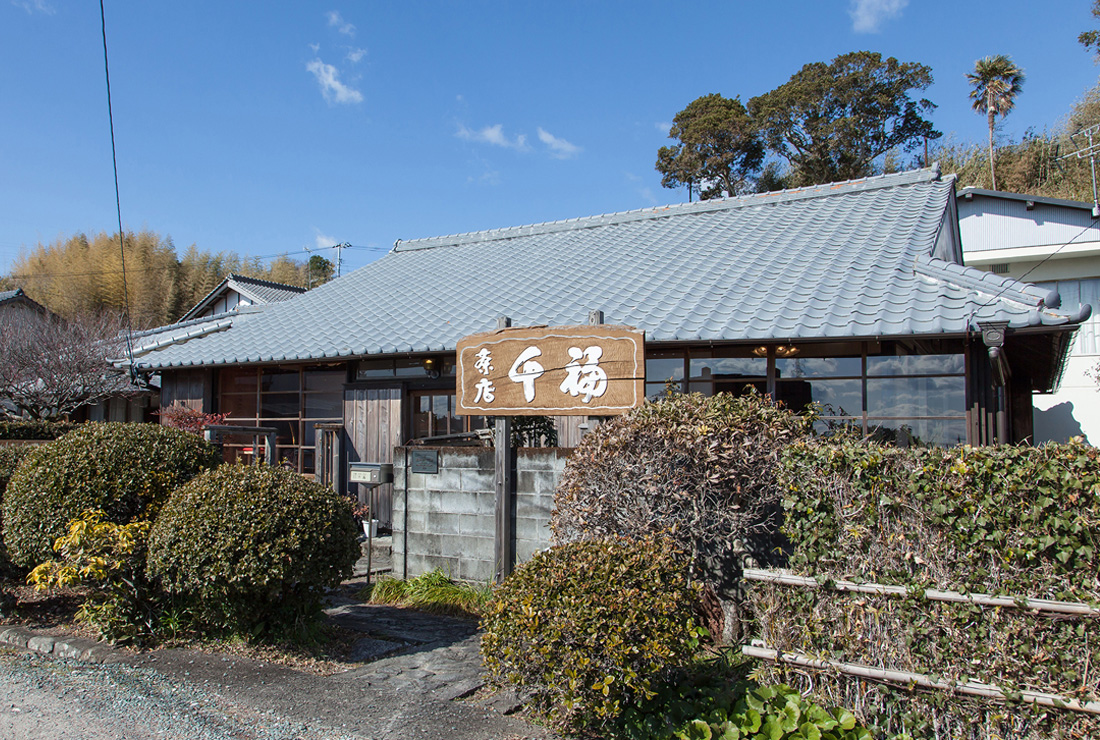
Senpuku Teahouse
This teahouse in Tano Town is an old Japanese-style house which was built toward the end of the Edo period. Savor a hot sandwich that features a delightful combination of bread and mayonnaise and has been expertly grilled to perfection. Souvenirs such as handmade sweet bean jelly and yuzu syrup are also available for purchase.
-
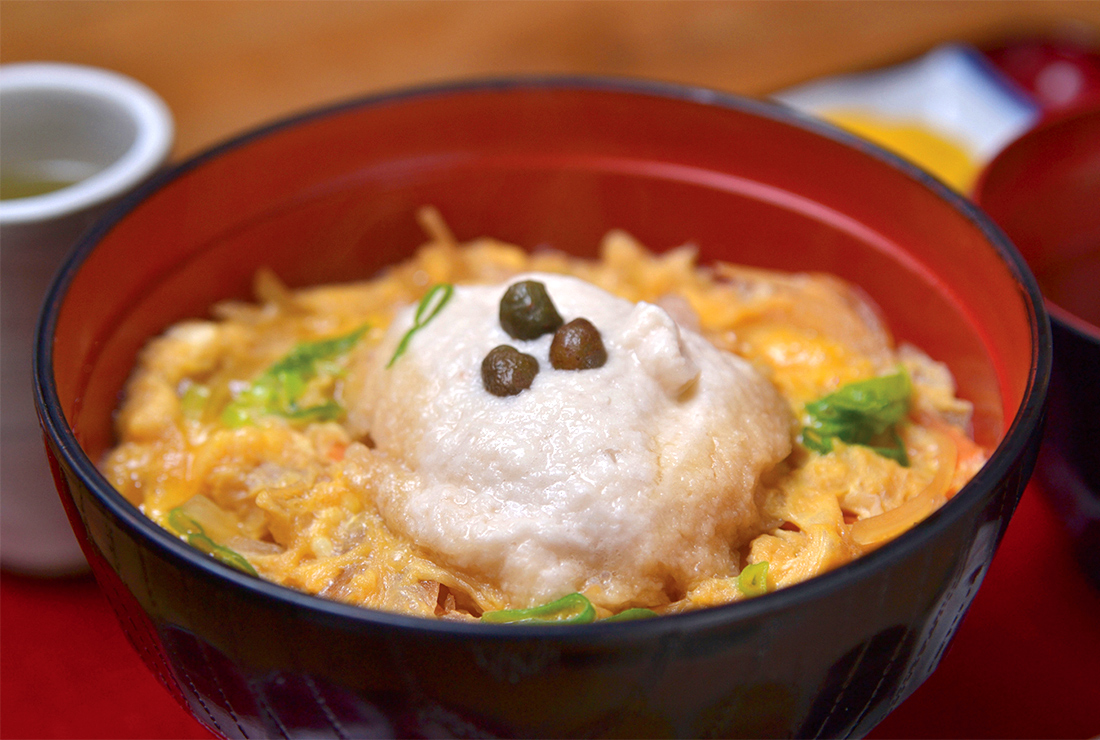
Ajikobo Jinen Restaurant
The Nakayama District of Yasuda Town is known for its wild yam. The light and delicate local dish, the wild yam rice bowl, is a chicken and egg rice bowl topped with grated yam (seasonally limited).
-
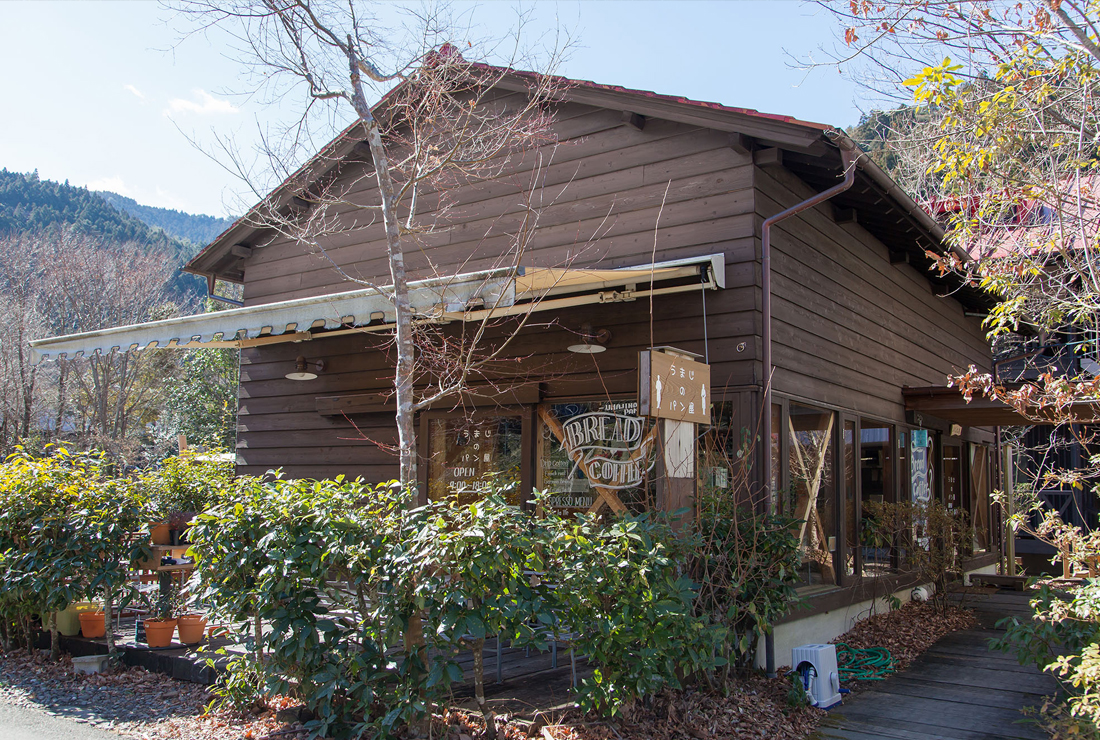
Umaji Bakery
Run by a lovely couple, this Umaji Village bakery is filled with the delicious aroma of coffee and bread. Try the yuzu and sweet red bean bread or the baguette which have been thoughtfully baked to perfection.
-
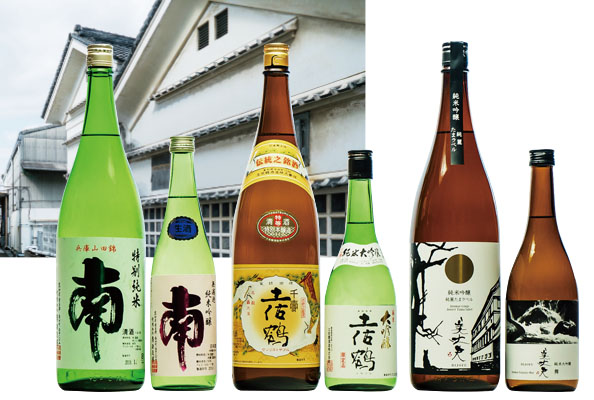
Sake Breweries of the Chugei Region
Minami, Tosa-Tsuru, and Hamakawa are the beloved sake breweries of the locals. The plentiful rain that flows into the rivers of Yanase Forest, one of the three most beautiful cedar forests of Japan, provides the pristine water which is the lifeblood of sake. The sake breweries of the Chugei Region are famous throughout Japan, and Tosa-Tsuru's sake has won the most highly regarded gold prize in the Annual Japan Sake Awards.
Relax
-
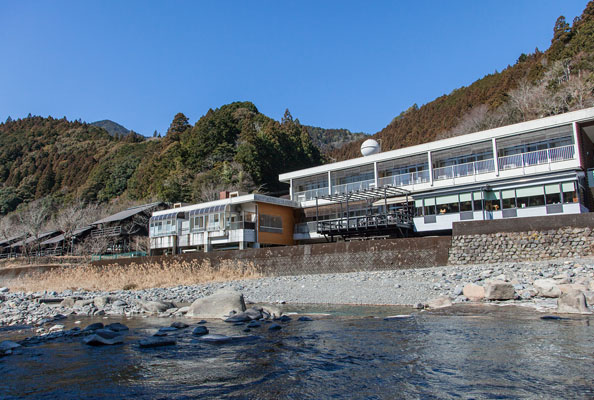
Umaji Hot Spring
The sodium bicarbonate and chloride properties of this hot spring are effective in treating wounds, burns, and rheumatic diseases. The bathing room offers an amazing view of the Yasuda River and the mountains of Umaji. It is also known for its beautifying effects on the skin.
At the restaurant, enjoy delicacies such as hot pots made with wild boar or the Tosa Jiro egg and yuzu hot pot. -
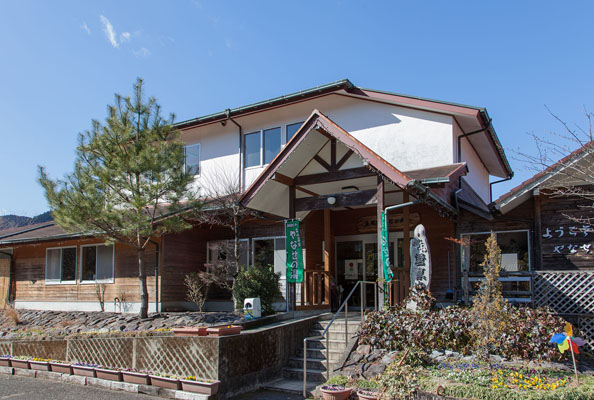
Yanase no Yu Hot Spring
The plentiful hydrogen carbonate ion in this hot spring is known to soften and clarify the skin.
It is popular for making the skin smooth and moisturized. Bathe in the lush forest scenery of the Yanase mountains.
-
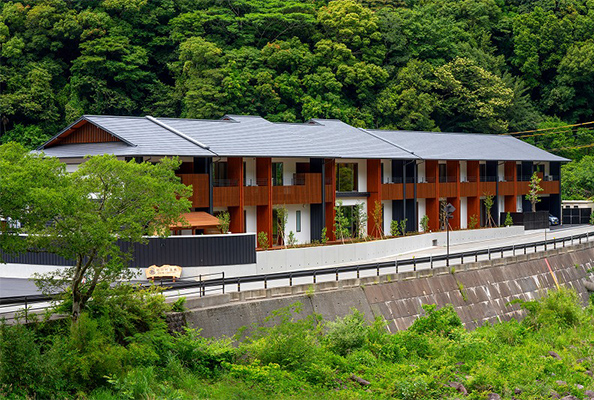
Kitagawamura Hot Spring
Kitagawa Village's Yuzu no Yado is the first hot spring facility in Japan to be built using CLT. It is a two-story building with a total floor area of 1,476m² (15,888ft²) and has gained attention nationwide.
-
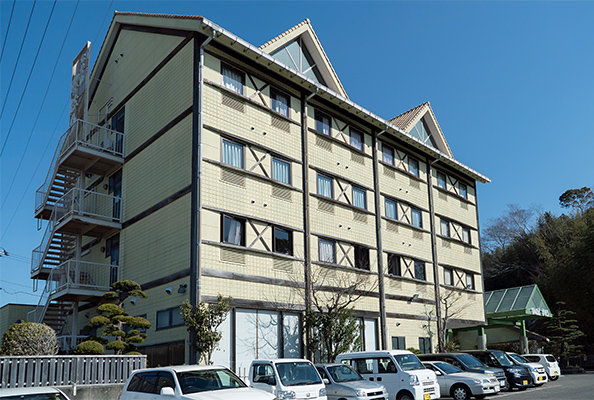
Hotel Nahari
Even if you are not staying at the hotel, you can enjoy the restaurant.
The restaurant serves local delicacies such as fresh tuna, seared bonito and Akaushi (Japanese brown cattle).
-
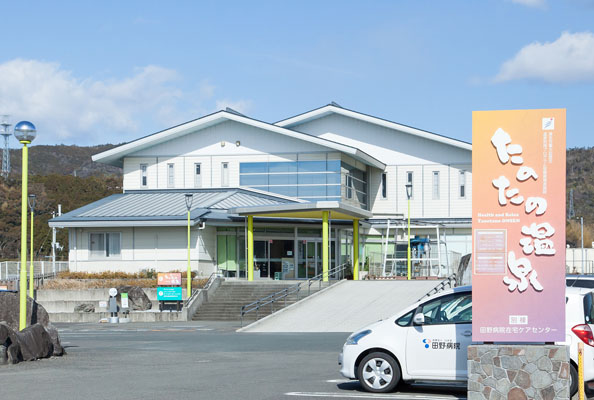
TanoTano Hot Spring
This hot spring is one of Japan's top three hot springs for beauty.
The facility has an onsen, sauna, water bath, lay-down bath, and treadmills. After getting some exercise and working up a sweat, wash it all away in the hot spring. -
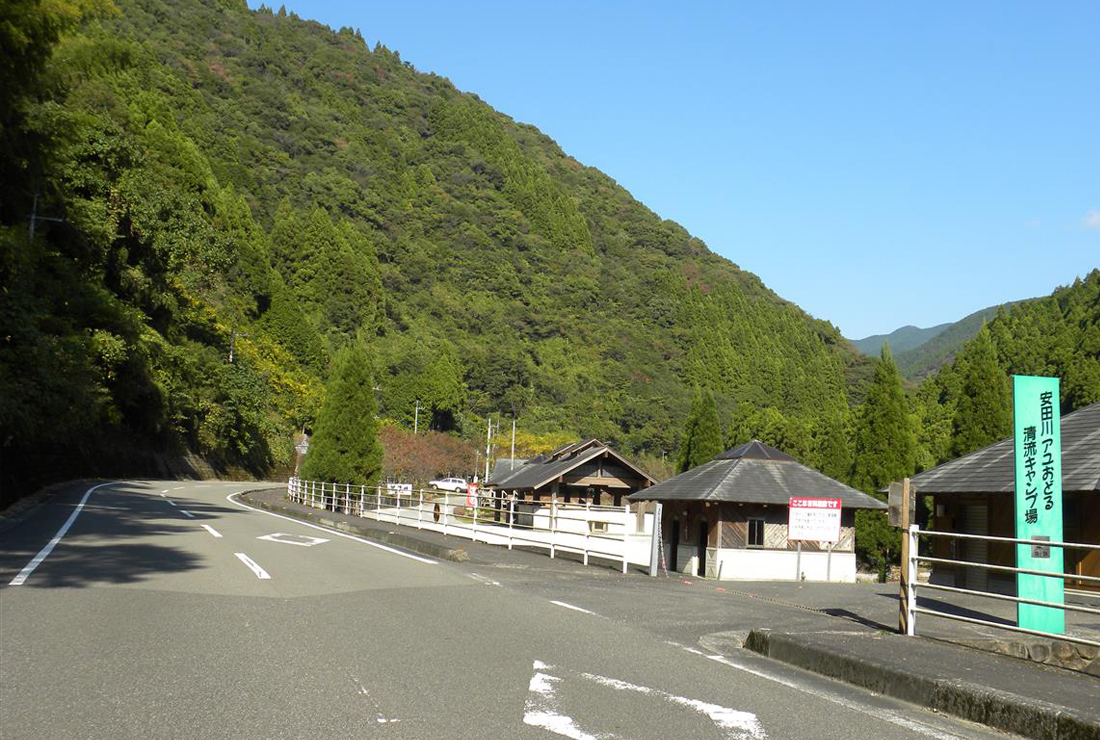
Yasuda Campground at the Pristine Yasuda River, Home of the Sweetfish
Yasuda Town is a sake brewing town. Explore the abundant nature of the Yasuda River, one of the few places in the prefecture where sweetfish can be found. Immerse yourself in the outdoors at the scenic campsite!
Shop / Souvenirs
-
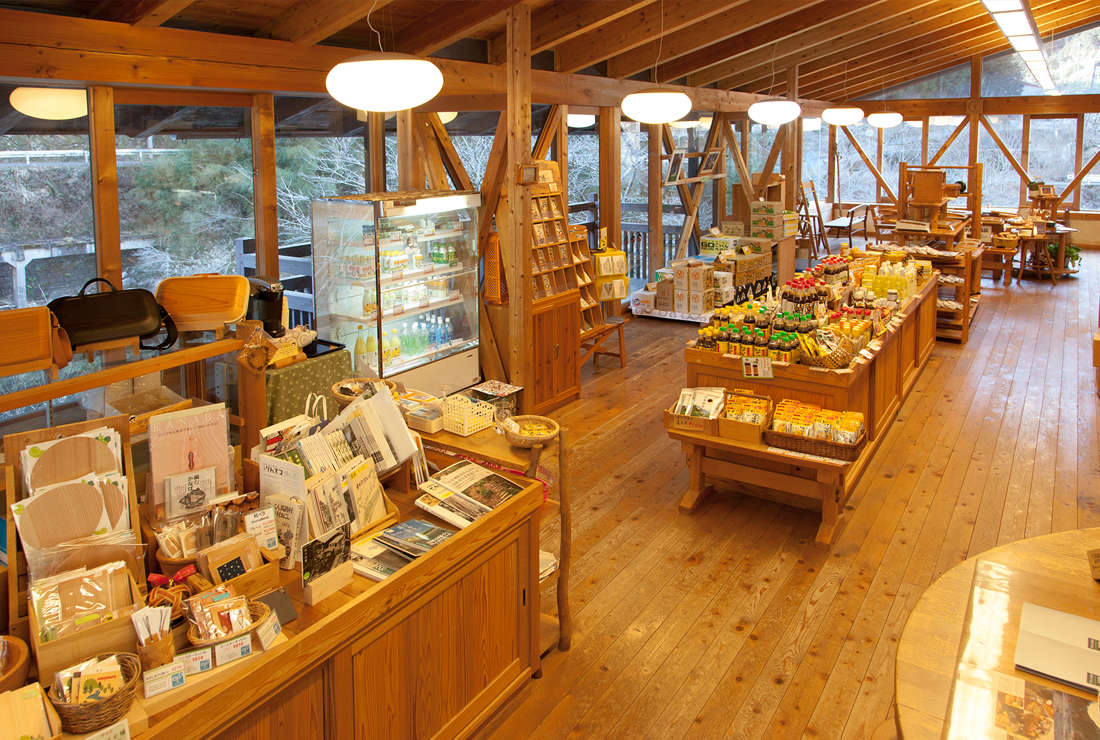
Makaichotte-ya
This information center is located at the entrance to Umaji-mura Village.
Receive driving directions and tour guide information. You can also make reservations to make your own mage-wappa wooden box.
Local goods can also be purchased at this facility. -
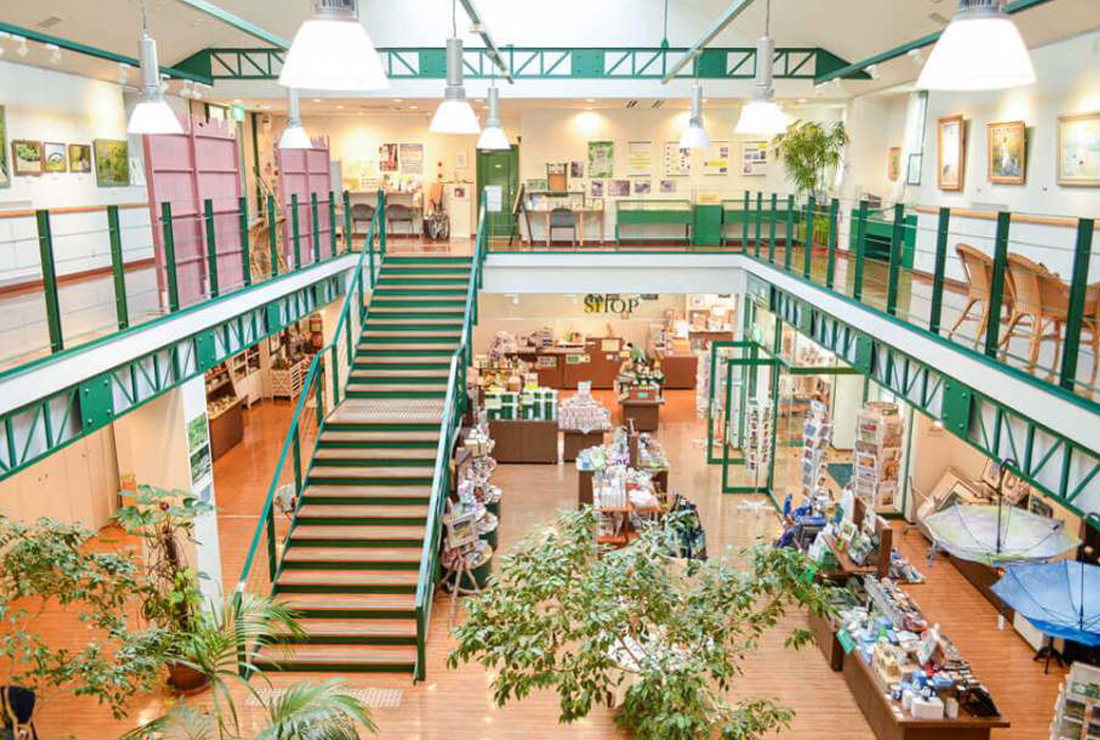
Monet Shop
This shop is located within Monet's Garden Marmottan in Kitagawa Village. Here you can purchase original museum souvenirs, gardening goods, sundries, yuzu products made in Kitagawa, local sake, and more. Admission into Monet's Garden is required.
-
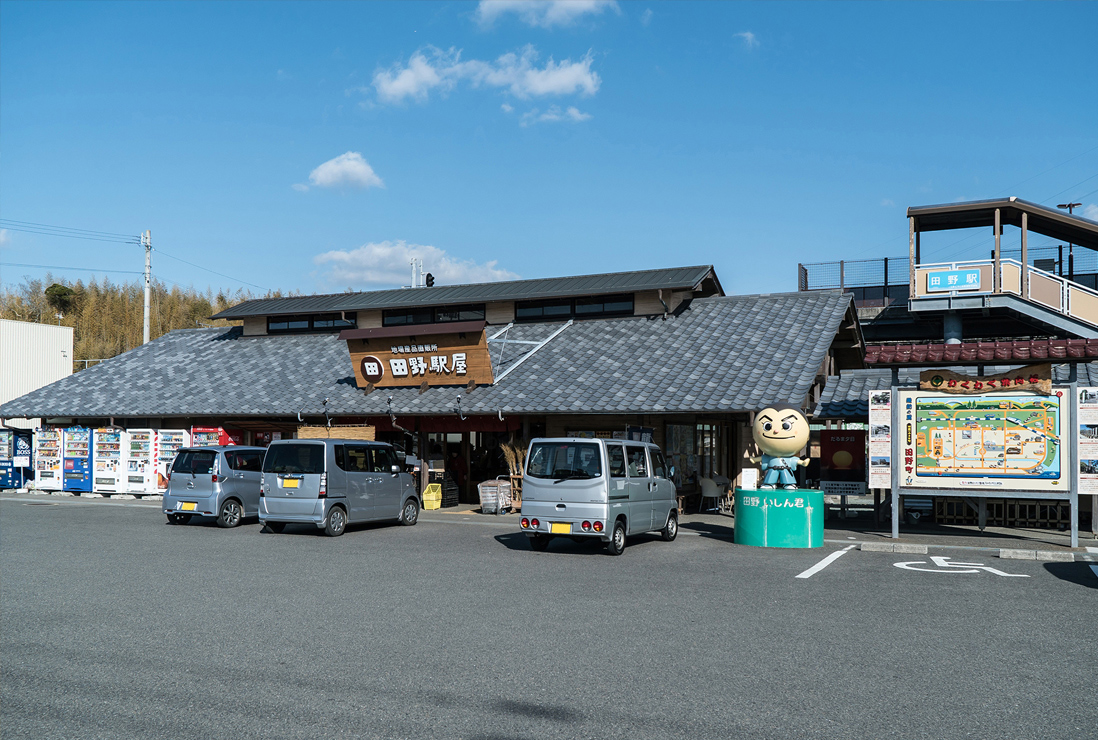
Tanoeki-ya Roadside Station
The Tanoeki-ya roadside station is located at Tano Station along the Gomen-Nahari Railway line. The shop features plenty of local produce and goods along with light meals. It also has an information corner where you can find "fresh" information.
-
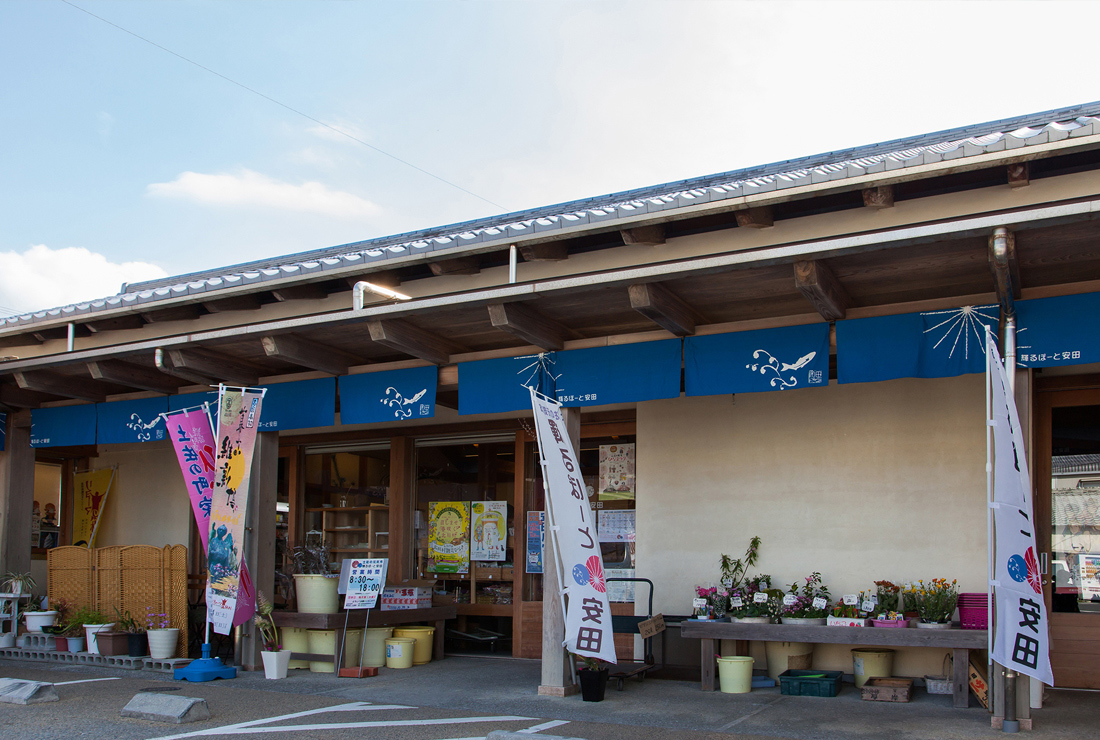
TeruPort Yasuda - The Vibrant Market of Tosa
Every morning, fresh produce made by local farmers is sold at this shop. A selection of boxed lunches, side dishes, snacks, and souvenirs are also available.
-
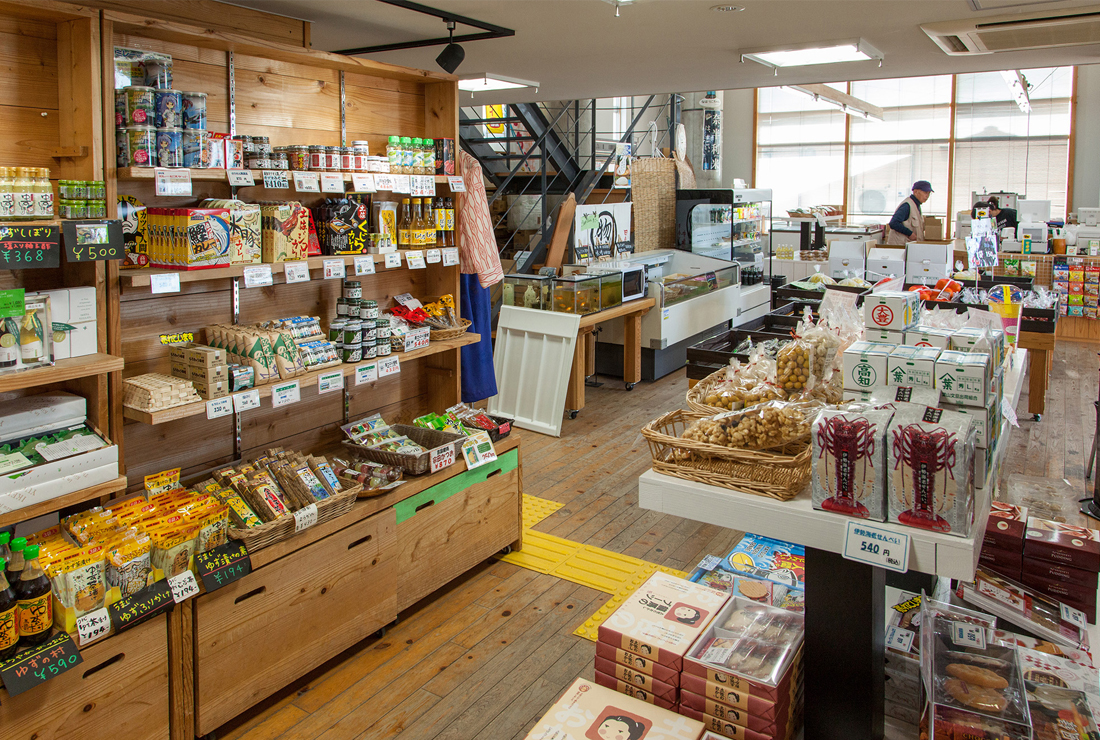
Ichijiku - Local Market at Nahari Station
Local farmers come to line up their freshly picked produce, including locally grown figs, at this market. The store is also packed full of handmade boxed lunches, souvenirs, and other delicacies.
